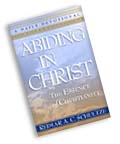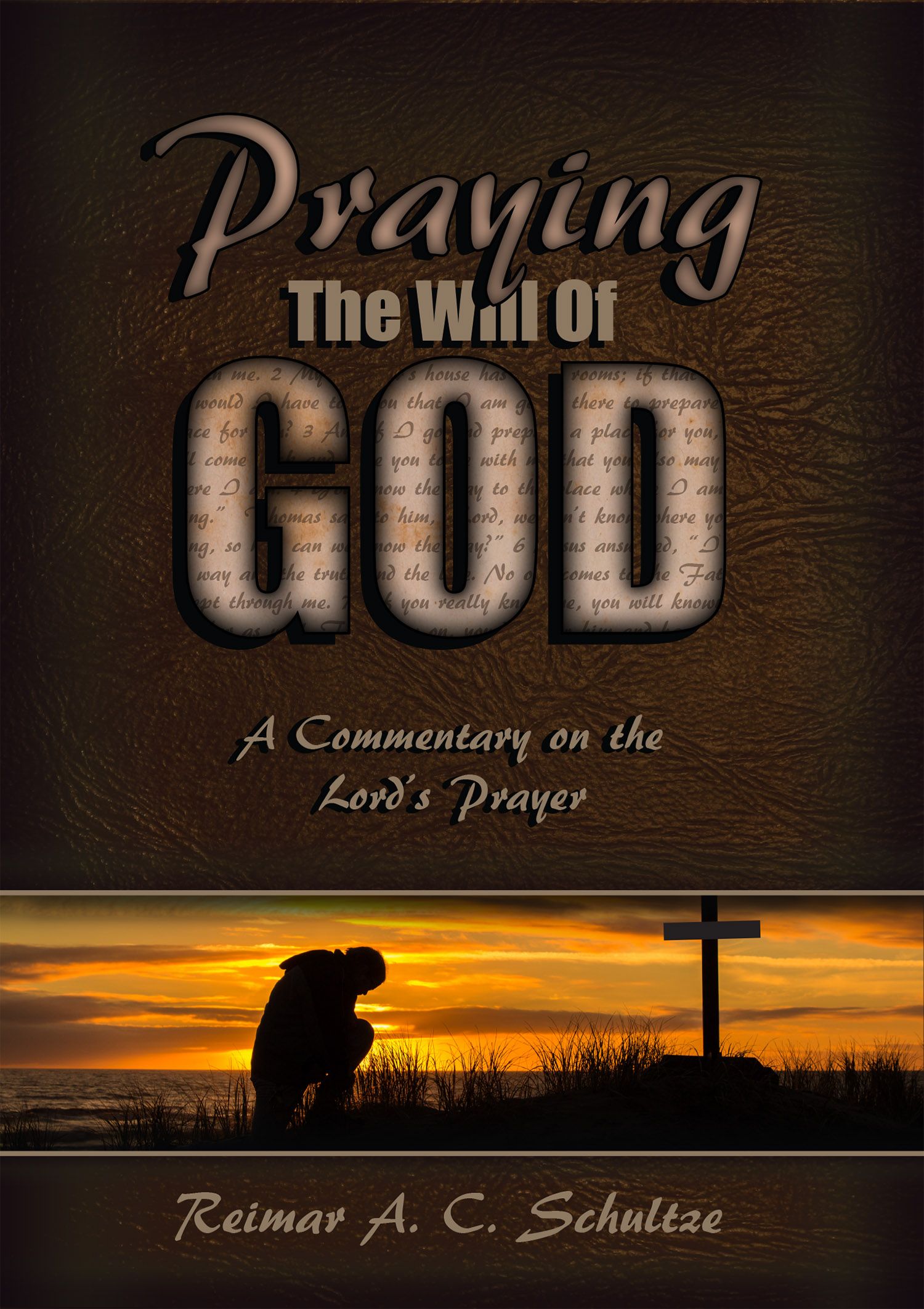
|
Now That You Are Born-Again: What Next? This booklet fits in your shirt pocket and will help Christians and new converts know what they are to do once they are saved. In this booklet, Pastor Schultze also shares the essential spiritual disciplines for a successful walk with God: Daily reading of the Bible, prayer, consistent witnessing , obedience.
|
|
Praying the Will of God The Lord's Prayer is an answer to His disciples' request: "Lord teach us to pray." As a result, our Lord and Savior gave us this prayer to take away all doubt as to which prayers He will answer and which He will not answer. However, this commentary is not only a call to pray rightly, but it also lays the foundation for Christian theology at its best." - Pastor Schultze.
|
|
The Ten Commandments are a gift from God to man, so that man may know how to live with his Maker and with other men. These laws are a moral compass for every soul, a code of ethics for every nation. To neglect them is to invite misery. To heed them is light and joy." - Pastor Schultze.
|
|
366 devotional readings that will unlock the secret power to Abiding In Christ
 Abiding in Christ is now available as an e-book Amazon |
|
Join Pastor Schultze on his amazing journey from "nothing...to all things."
$20.00 includes shipping and handling if mailed in the United States. Make check payable to CTO Books. Mail your order to: CTO Books PO Box 825 Kokomo, Indiana 46903 Please include your mailing address and telephone number should we need to call you! |
![]()
CALL TO OBEDIENCE #459
Reimar A.C. Schultze
Past Issues of the Call To Obedience
"A Look At The Early Church"
Reimar A. C. Schultze
Today, let us quickly peek into this period. In the first 300 years, the church had an ever-increasing influence on the world. But now, during recent years in America, the world is having an ever-increasing influence on the church. So what is wrong with us?
With this, let us take notice today that the first 300 years of the church were the most productive years of Christianity. And this was despite the church having faced incredible hostility during those 300 years when up to 2 million Christians were martyred. Of course, Jesus was the first martyr, and then followed Stephen, the deacon, and then most of His apostles died as follows:
Bartholomew was skinned alive and beheaded.
James, the Less, was stoned and clubbed to death.
Andrew was crucified by being tied to an x-shaped cross and from there he preached for at least two days before he finally died.
Peter, who refused to renounce his faith, was crucified upside down, at his request.
Thomas was impaled by a spear.
James, the Greater, was beheaded.
Philip was thrown into prison, scourged and finally crucified.
Matthew was nailed to the ground and beheaded in Ethiopia, although the Gnostics say he was covered with pitch and set on fire.
Jude (Thaddaeus) was either crucified or clubbed to death in Edessa, Turkey.
Simon, the Zealot, was crucified in Samaria.
John, the beloved Apostle, was reported to have been thrown into boiling oil in Rome, but survived, to live to old age, the only one reported to have a non-violent death. (Sources: Foxe’s Book of Martyrs by John Foxe, 1563; The Martyrs Mirror by Thieleman J. van Braght, 1659.)
Here are some additional means by which Christians were tortured and killed: fried to death on hot plates, thrown to tigers, dragged to death by horses, eviscerated, burned at the stake, torn apart, tortured by bird darts being shot into their faces and eyes, hot oil poured down their throat, and the list goes on. Again, up to 2 million saints died during that time.
Now, let us begin our study at the end of the book of Acts where Paul was under house arrest and still preaching the gospel of the kingdom of God (Acts 28:30-31). This then led to his trial where he was found guilty and beheaded. That set the stage for what any new convert could expect during the first 300 years of the church. So, when you became a Christian in those days, it meant that you were willing to lose your family, be displaced, arrested, tortured and martyred for Jesus sake, but you kept witnessing until you died. Yet, despite all of this, the Church remained an invincible force that could not be stopped. It was the salt of the earth and the light to the world.
And it is here where we need to ask the following questions: “What was the formula that kept the church on fire for God for such an unabated, prolonged period? Why didn’t these Christians just shut up, be private about their Christianity and live a normal life?” First, they could not be quiet because Jesus gave them the commission to preach the gospel everywhere and if they would not, they knew He would be ashamed of them on Judgment Day and they would lose their place in heaven. And secondly, they preached or witnessed because they had the fire of God in their bones, the fire of God’s love and compassion for sinners. Then and there, it was understood that every person became an evangelist the day he was born of God. And thirdly, the pattern established by the early church as recorded in Acts 2 was the method for conducting church meetings for the next 300 years and included the following: 1) they all repented and adopted a new non-conformist lifestyle under the Lordship of Christ; 2) they all were baptized; 3) they all met regularly for fellowship, breaking of bread, prayer, praise, the study of the apostle’s doctrines and sharing with one another so each one had their needs met. In other words, they had all things common (Acts 2:41-46). “Regularly” meant daily in those days. Today, “regularly” has a different meaning.
Whenever the church met, they were all there. Every church service was a prayer meeting. Every church service was a praise meeting. Every church service was a worship meeting. Every church service was a “continuing in the apostle’s doctrine” meeting, a fellowship meeting, and a time of breaking of bread together. Show me a church that has all of these elements and you are showing me a New Testament church. In those first 300 years, people went to church and were there as a family, and not as spectators of the performance of a program full of rituals put on by a few people. These new believers of the early church were always engaged in prayer, praise and fellowship several times a week which easily kept the fire burning in their hearts. With that there was no need for coercive evangelism. There was so much life and fire in the churches that the Lord Himself added daily to the Church such as should be saved. Let me ask you the question: “Can your church be trusted by the Lord with a new convert full of the initial fire and love for Jesus?” He cannot if your church is predominantly a congregation of part-timers or backsliders.
The early church met primarily in homes or secret places when persecution was prevalent. They did not sit in rows facing the preacher up front. They faced each other, they saw each other’s needs, they opened up to each other, they exhorted one another and prayed one for another. Their meetings were fellowship of Christ’s body.
For 300 years, despite the persecutions, Christianity spread all the way from Spain in the West to India in the East, to Scotland in the north and North Africa in the south. They had no literature to distribute because the printing press was not around until the 16th century. They had no radio programs. Transportation was by foot, by horse or donkey. Life was hard in other ways. Only half of those born lived beyond the 10th birthday. Yet the church went on conquering. Again, the church did not conform to the world but transformed the world so that by the year 311, by some estimates, 80% of all Roman soldiers were Christians and Emperor Constantine declared Christianity the religion of the state.
Something else that kept the hearts of new believers in those days were the high standards regarding baptism and Holy Communion. Almost always, instant baptism following conversion was practiced at first, but later, new Christians had to wait up to three years in a sort of apprenticeship before they were baptized. The early theologian, Hippolytus, insisted that new converts were to be thoroughly questioned about their lifestyles: whether they lived in cohabitation, whether they frequented the theater, or were involved in some immoral trade. This caution in accepting new converts and then assigning them to be under the care of a mature Christian made the early churches quite resistant to part-timers or pretenders.
Another factor that kept the early church steady was that they honored their seasoned elders. Paul said: Let the elders that rule well be counted worthy of double honour, especially they who labour in the word and doctrine (1 Tim. 5:17). To give church leadership to young people who have yet to be tested, who still lack maturity and wisdom, is neither scriptural nor wise. Surely, we need the strength and vigor of the young, but we must have seasoned leadership. And because of that, the church saw the fulfillment of Joel’s prophecy for 300 consecutive years: And it shall come to pass afterward, that I will pour out my spirit upon all flesh; and your sons and your daughters shall prophesy... (Joel 2:28). Young people along with the older ones witnessed, prayed and preached.
Of course, this does not mean everything was perfect in these churches. By no means. There was division and strife as you see in Paul’s letter to the Corinthians. There were heresies as we see in Jesus’ messages to the seven churches. There was carnality trying to control every believer. However despite all of this, the truth remained: after 300 years, the world became more like the church and that is what is missing today.
After persecutions stopped, so did the witnessing. The church became institutionalized and many pagans became nominal members in order to enjoy the preferential treatment of Christians. And there was a lowering of moral standards. Formalism and rituals appeared in worship, with set prayers, candles, incense and vestments. Church services became a performance rather than a meeting of the believers as a family.
Pentecost was truly the mother of all revivals in Christianity. Its roots where the deepest of any that followed and its life was maintained and perpetuated as long as its participants were committed to the disciplines necessary for its sustenance. Hence the first 300 years of the church were not dark ages. In this much-forgotten period, the light of God shone more brightly than in any other 300-year-long period since. Let us prayerfully look at this and consider what valuable lessons we can learn from the early church. May the Holy Spirit grant all of us His divine light on this holy assignment.
HOME • ARCHIVES • CONTACT • WORLD WIDE RADIO • CALL TO OBEDIENCE
• CHILD DISCIPLINE • REIMAR SCHULTZE'S TESTIMONY • WALKING WITH GOD



